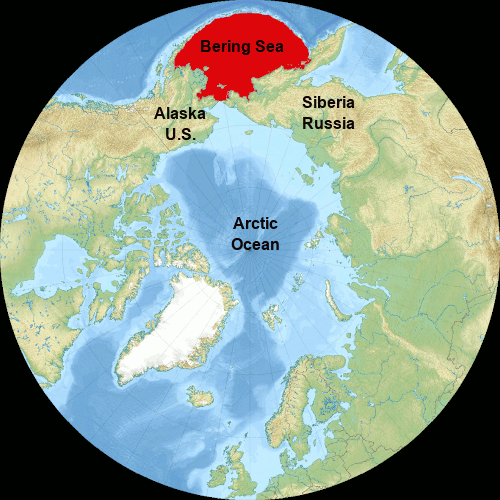
Circle the area on this map

D. Russia claims the largest area of the Arctic, but Canada, Denmark (via Greenland), Norway, Iceland and the United States also claim resources there. Parts of Finland and Sweden are in the Arctic, and they demand to help decide environmental and economic issues in the region.
C. The Bering Sea is the northern-most part of the Pacific Ocean, the largest of the world’s five oceans. It is separated from the Arctic Ocean by the Bering Strait between Asia and North America. The Arctic is the smallest ocean behind the Pacific, Atlantic, Indian and Southern.
B. Vitus Bering was a seaman born in Denmark who joined the Russian Navy of Peter the Great in 1704. Beginning in 1725, he led expeditions for tsar to explore and map the waters between Asia and North America. He died there in1741 after being shipwrecked on an island also later named for him.
A. "The prospect of loss of (summer) sea ice by 2035 should really be focusing all our minds on achieving a low-carbon world as soon as humanly feasible," said British palaeoclimate modeler Louise Sime. Arctic ice is at its maximum in March and its minimum in September.